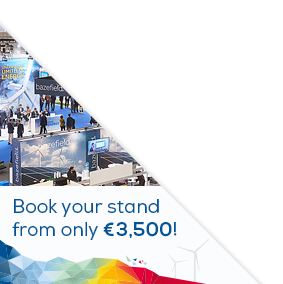Posters
Siblings:
ProceedingsProgrammeProceedingsSpeakersPostersContent PartnersElectrification StageMarkets TheatreR&I ActivitiesStudent DayProgramme Committee & abstracts reviewersPresenters dashboardCome meet the poster presenters to ask them questions and discuss their work
We would like to invite you to come and see the posters at our upcoming conference. The posters will showcase a diverse range of research topics and provide an opportunity for delegates to engage with the authors and learn more about their work. Whether you are a seasoned researcher or simply curious about the latest developments in your field, we believe that the posters will offer something of interest to everyone. So please, join us at the conference and take advantage of this opportunity to learn and engage with your peers in the academic community. We look forward to seeing you there!

PO221: POSTER AWARD WINNER - Particle Based Damping Concepts for Onshore Wind Turbines
Braj Bhushan Prasad, Research Assistant, Otto-von-Guericke-University Magdeburg
Abstract
The experimental investigations have demonstrated the usefulness of the particle damping technique. It has been found that all concepts developed to reduce the vibration amplitude of wind turbine stators are very efficient. The damping plate concept has shown that the location of the damping plate on the stator plays a crucial role in vibration attenuation. The investigation also shows that a vibration attenuation of up to 12 dB can be achieved by mounting a multi-unit damping plate on the outer wall of the stator ring. However, the additional mass and complex manufacturing and production process can be a drawback for this concept. Therefore, to tackle this concern, the existing cavity concept has been developed. This approach can reduce the vibration amplitude of the wind turbine stator test specimen up to 18 dB with a minimal increase in the additional mass. The material investigation has shown that materials, like rubber granulate, are efficient to reduce the low-frequency vibration amplitude. All concepts and design variables proposed in this contribution for wind turbine stator are combined and have been tested at a real-scale wind turbine stator, which shows a promising outcome. Moreover, all strategies developed for wind turbine blades can reduce the vibration amplitude significantly. However, the additional mass, tedious manufacturing, and production process can be drawbacks to this approach. The second approach is capable of reducing the vibration amplitude up to 22 dB. Nevertheless, modification of the original sandwich core can also modify the stiffness and vibration behavior of the primary structure as well as can weaken the laminates and cause durability issues. Hence, to resolve this issue a third strategy has been suggested, which shows similar vibration attenuation as the second approach with a marginal increase in additional mass. Therefore, this strategy has been successfully tested on real-scaled wind turbine blades.







